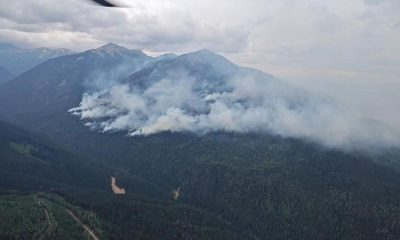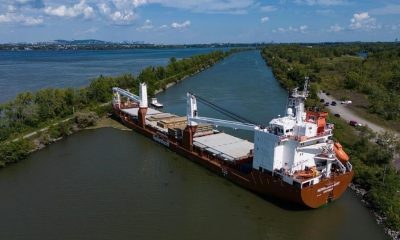Science
The Lunar Gateway is No Longer a Required Part of the Artemis Mission to Return to the Moon by 2024 – Universe Today

In 2010, President Barack Obama signed the NASA Authorization Act, which charged NASA with developing all the necessary technologies and components to allow for a crewed mission to Mars. Key to this was the development of the Space Launch System (SLS), the Orion spacecraft, and an orbiting lunar habitat (aka. the Lunar Gateway).
However, in recent years, these plans have been altered considerably to prioritize “returning to the Moon.” Formally named Project Artemis, VP Pence emphasized in March of 2019 that NASA must return to the Moon by 2024, even if it meant some shakeups were needed. In the latest news, NASA has indicated that the Lunar Gateway is no longer a priority, as part of a plan to “de-risk” the mandatory tasks associated with Artemis.
These sentiments were expressed by Doug Loverro, who replaced William Gerstenmaier in July of 2019 as part of a shakeup designed to expedite progress with the SLS and the Artemis program in general. As Loverro explained during a NASA Advisory Council science committee (held on Friday, March 13th), he has been working to “de-risk” Artemis so NASA can focus on meeting the mandatory goals of Artemis and its 2024 deadline.
As Lovarro explained, this means focusing on technologies and activities that NASA already has experience developing. He also stated that those risks that can’t be eliminated need to be “burned down”. All of this is essential, he claimed, to creating the necessary mission architecture to land astronauts on the Moon by 2024. As he summarized:
“What are we going to do to go ahead and make that happen? And the answer is you’ve got to go ahead and remove all the things that add to program risk along the way.
“What are all of the risks that can get in our way in a four-and-a-half-year schedule and how do we go ahead and pull them all early into program, or eliminate them from the program altogether by going ahead and making wise technical or programmatic choices?”
For this reason, he said during the latter half of the session, the Lunar Gateway had to be removed as a critical element to the program. This comes on the heels of what Associate Administrator Steve Jurczyk announced back in February at the LSIC’s kickoff meeting. It was here that Jurczyk explained that the first mission (Artemis 1) would likely be delayed and would take place in “mid to late” 2021.
Another reason cited by Lovarro for the decision was the likelihood that the Gateway will fall behind in its development schedule. This he attributed to the fact that the first module, the Power and Propulsion Element (PPE), calls for an advanced solar-electric propulsion system that will allow it to act as a sort of “space tug” for visiting spacecraft while also serving as the command and communications center of the Gateway.
In May of 2019, NASA announced that it had awarded a $375 million contract to Colorado-based aerospace company Maxar Technologies (formerly SSL) to develop the PPE. The design called for a 50-kilowatt solar electric propulsion (SEP) spacecraft that will serve as a mobile command and service module and communications relay for human and robotic expeditions to the lunar surface.
Originally, NASA hoped to have this module ready by 2022 so that it could be launched as part of the Artemis 2 mission. The creation of other elements – like the HAbitation and Logistics Outpost (HALO), the ESPRIT service module, and the International Habitation Module (iHAB) – were also recently contracted to Northrop Grumman Innovation Systems (NGIS) and Airbus and OHB, respectively.
But as we reported in a previous article, since March of 2019, there have been concerns at NASA that the expedited timeline could come at the cost of sacrificing the Lunar Gateway. As an inside source reported at the time, there had been apparent pushback from the White House Office of Management and Budget (OMB) over continued funding for an element they considered unnecessary.
Of course, Loverro emphasized that NASA was not abandoning the Lunar Gateway and that removing it from the “critical path” would lead to a better Gateway program. For one, it will give NASA contractors more time to develop their modules, which were originally scheduled for completion beginning in 2026. Second, it will cut the associated costs for Project Artemis. As he said:
“We can now tell them 100% positively it will be there because we’ve changed that program to a much more what I would call solid, accomplishable schedule… Frankly, had we not done that simplification, I was going to have to cancel Gateway because I couldn’t afford it. By simplifying it and taking it out of the critical path, I can now keep it on track.”
This means that the Artemis missions will no longer rely on the Gateway and will instead use a lunar lander incorporated into the Orion spacecraft. Here too, Loverro hinted that there would be changes in order to cut costs and reduce risks. Previously, NASA had proposed a reusable three-stage lander consisting of an ascent module, descent module, and transfer module – all of which would be assembled at the Gateway.
Instead, Loverro proposed taking the time-tested and proven approach. This likely means that the Artemis lander will be a two-stage spacecraft, like the lunar module that took the Apollo astronauts to the Moon, consisting of a descent stage and an ascent stage. In Sept. of 2019, when NASA announced the decision to fast-track the development of the lunar lander, contractors were given the option of suggesting non-reusable alternatives as well.

“Program risk is driven by which things haven’t you done in space before that you would now have to do in this mission,” said Loverro. “We’ve never done that before, so we’d like to try to avoid doing things we’ve never done before.” In the meantime, the finalized plan for Artemis is expected in the near future, though Loverro could not provide a more concrete idea of when it would be unveiled.
In effect, this means that Artemis will be a “boots and flags” operation like the Apollo missions, something that NASA was originally hoping to avoid. On top of that, there have been severely mixed messages coming from this administration. Whereas VP Pence has remained resolute in his stated commitment to Artemis, President Trump has publicly criticized the project for retreading on old ground.
“NASA should NOT be talking about going to the Moon – We did that 50 years ago. They should be focused on the much bigger things we are doing, including Mars…” he tweeted on June 7th, 2019. This was followed by similar statements made in September during the visit of Australian PM Scott Morrison, where he stated to press that were in attendance:
“We’re going to Mars. We’re stopping at the moon. The moon is actually a launching pad. That’s why we’re stopping at the moon. I said, ‘Hey, we’ve done the moon. That’s not so exciting.’ So we’ll be doing the moon. But we’ll really be doing Mars.”

Still, all signs point toward NASA still being committed to establishing a “sustainable lunar exploration” program on the Moon, which is intended to include the creation of a permanent lunar outpost. Examples of this include the ESA’s proposed International Moon Village and China’s plan for building an outpost in the South Pole-Aitken Basin.
Nevertheless, the decision to make a lunar landing happen by 2024 “by any means necessary” (not to mention conflicting statements from the White House) has caused its fair share of confusion and chaos around NASA. With the “Moon to Mars” framework, the creation of the Lunar Gateway and a crewed mission to the lunar surface by 2028 were interdependent.
But if there’s one thing that space exploration has taught us, it is that budgets and priorities change regularly, which is why it is important to be flexible and adapt. One way or another, we’re going back to the Moon and we intend to stay there! The means to do so may just take a little longer than expected.
Further Reading: Space News
Science
Asteroid Apophis will visit Earth in 2029, and this European satellite will be along for the ride

The European Space Agency is fast-tracking a new mission called Ramses, which will fly to near-Earth asteroid 99942 Apophis and join the space rock in 2029 when it comes very close to our planet — closer even than the region where geosynchronous satellites sit.
Ramses is short for Rapid Apophis Mission for Space Safety and, as its name suggests, is the next phase in humanity’s efforts to learn more about near-Earth asteroids (NEOs) and how we might deflect them should one ever be discovered on a collision course with planet Earth.
In order to launch in time to rendezvous with Apophis in February 2029, scientists at the European Space Agency have been given permission to start planning Ramses even before the multinational space agency officially adopts the mission. The sanctioning and appropriation of funding for the Ramses mission will hopefully take place at ESA’s Ministerial Council meeting (involving representatives from each of ESA’s member states) in November of 2025. To arrive at Apophis in February 2029, launch would have to take place in April 2028, the agency says.
This is a big deal because large asteroids don’t come this close to Earth very often. It is thus scientifically precious that, on April 13, 2029, Apophis will pass within 19,794 miles (31,860 kilometers) of Earth. For comparison, geosynchronous orbit is 22,236 miles (35,786 km) above Earth’s surface. Such close fly-bys by asteroids hundreds of meters across (Apophis is about 1,230 feet, or 375 meters, across) only occur on average once every 5,000 to 10,000 years. Miss this one, and we’ve got a long time to wait for the next.
When Apophis was discovered in 2004, it was for a short time the most dangerous asteroid known, being classified as having the potential to impact with Earth possibly in 2029, 2036, or 2068. Should an asteroid of its size strike Earth, it could gouge out a crater several kilometers across and devastate a country with shock waves, flash heating and earth tremors. If it crashed down in the ocean, it could send a towering tsunami to devastate coastlines in multiple countries.
Over time, as our knowledge of Apophis’ orbit became more refined, however, the risk of impact greatly went down. Radar observations of the asteroid in March of 2021 reduced the uncertainty in Apophis’ orbit from hundreds of kilometers to just a few kilometers, finally removing any lingering worries about an impact — at least for the next 100 years. (Beyond 100 years, asteroid orbits can become too unpredictable to plot with any accuracy, but there’s currently no suggestion that an impact will occur after 100 years.) So, Earth is expected to be perfectly safe in 2029 when Apophis comes through. Still, scientists want to see how Apophis responds by coming so close to Earth and entering our planet’s gravitational field.
“There is still so much we have yet to learn about asteroids but, until now, we have had to travel deep into the solar system to study them and perform experiments ourselves to interact with their surface,” said Patrick Michel, who is the Director of Research at CNRS at Observatoire de la Côte d’Azur in Nice, France, in a statement. “Nature is bringing one to us and conducting the experiment itself. All we need to do is watch as Apophis is stretched and squeezed by strong tidal forces that may trigger landslides and other disturbances and reveal new material from beneath the surface.”
By arriving at Apophis before the asteroid’s close encounter with Earth, and sticking with it throughout the flyby and beyond, Ramses will be in prime position to conduct before-and-after surveys to see how Apophis reacts to Earth. By looking for disturbances Earth’s gravitational tidal forces trigger on the asteroid’s surface, Ramses will be able to learn about Apophis’ internal structure, density, porosity and composition, all of which are characteristics that we would need to first understand before considering how best to deflect a similar asteroid were one ever found to be on a collision course with our world.
Besides assisting in protecting Earth, learning about Apophis will give scientists further insights into how similar asteroids formed in the early solar system, and, in the process, how planets (including Earth) formed out of the same material.
One way we already know Earth will affect Apophis is by changing its orbit. Currently, Apophis is categorized as an Aten-type asteroid, which is what we call the class of near-Earth objects that have a shorter orbit around the sun than Earth does. Apophis currently gets as far as 0.92 astronomical units (137.6 million km, or 85.5 million miles) from the sun. However, our planet will give Apophis a gravitational nudge that will enlarge its orbit to 1.1 astronomical units (164.6 million km, or 102 million miles), such that its orbital period becomes longer than Earth’s.
It will then be classed as an Apollo-type asteroid.
Ramses won’t be alone in tracking Apophis. NASA has repurposed their OSIRIS-REx mission, which returned a sample from another near-Earth asteroid, 101955 Bennu, in 2023. However, the spacecraft, renamed OSIRIS-APEX (Apophis Explorer), won’t arrive at the asteroid until April 23, 2029, ten days after the close encounter with Earth. OSIRIS-APEX will initially perform a flyby of Apophis at a distance of about 2,500 miles (4,000 km) from the object, then return in June that year to settle into orbit around Apophis for an 18-month mission.
Related Stories:
Furthermore, the European Space Agency still plans on launching its Hera spacecraft in October 2024 to follow-up on the DART mission to the double asteroid Didymos and Dimorphos. DART impacted the latter in a test of kinetic impactor capabilities for potentially changing a hazardous asteroid’s orbit around our planet. Hera will survey the binary asteroid system and observe the crater made by DART’s sacrifice to gain a better understanding of Dimorphos’ structure and composition post-impact, so that we can place the results in context.
The more near-Earth asteroids like Dimorphos and Apophis that we study, the greater that context becomes. Perhaps, one day, the understanding that we have gained from these missions will indeed save our planet.

Science
McMaster Astronomy grad student takes a star turn in Killarney Provincial Park
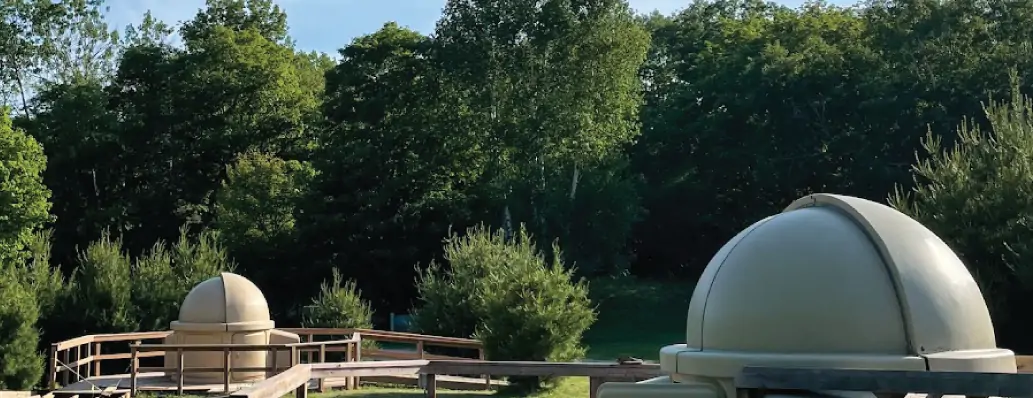
Astronomy PhD candidate Veronika Dornan served as the astronomer in residence at Killarney Provincial Park. She’ll be back again in October when the nights are longer (and bug free). Dornan has delivered dozens of talks and shows at the W.J. McCallion Planetarium and in the community. (Photos by Veronika Dornan)
BY Jay Robb, Faculty of Science
July 16, 2024
Veronika Dornan followed up the April 8 total solar eclipse with another awe-inspiring celestial moment.
This time, the astronomy PhD candidate wasn’t cheering alongside thousands of people at McMaster — she was alone with a telescope in the heart of Killarney Provincial Park just before midnight.
Dornan had the park’s telescope pointed at one of the hundreds of globular star clusters that make up the Milky Way. She was seeing light from thousands of stars that had travelled more than 10,000 years to reach the Earth.
This time there was no cheering: All she could say was a quiet “wow”.
Dornan drove five hours north to spend a week at Killarney Park as the astronomer in residence. part of an outreach program run by the park in collaboration with the Allan I. Carswell Observatory at York University.
Dornan applied because the program combines her two favourite things — astronomy and the great outdoors. While she’s a lifelong camper, hiker and canoeist, it was her first trip to Killarney.
Bruce Waters, who’s taught astronomy to the public since 1981 and co-founded Stars over Killarney, warned Dornan that once she went to the park, she wouldn’t want to go anywhere else.
The park lived up to the hype. Everywhere she looked was like a painting, something “a certain Group of Seven had already thought many times over.”
She spent her days hiking the Granite Ridge, Crack and Chikanishing trails and kayaking on George Lake. At night, she went stargazing with campers — or at least tried to. The weather didn’t cooperate most evenings — instead of looking through the park’s two domed telescopes, Dornan improvised and gave talks in the amphitheatre beneath cloudy skies.
Dornan has delivered dozens of talks over the years in McMaster’s W.J. McCallion Planetarium and out in the community, but “it’s a bit more complicated when you’re talking about the stars while at the same time fighting for your life against swarms of bugs.”
When the campers called it a night and the clouds parted, Dornan spent hours observing the stars. “I seriously messed up my sleep schedule.”
She also gave astrophotography a try during her residency, capturing images of the Ring Nebula and the Great Hercules Cluster.
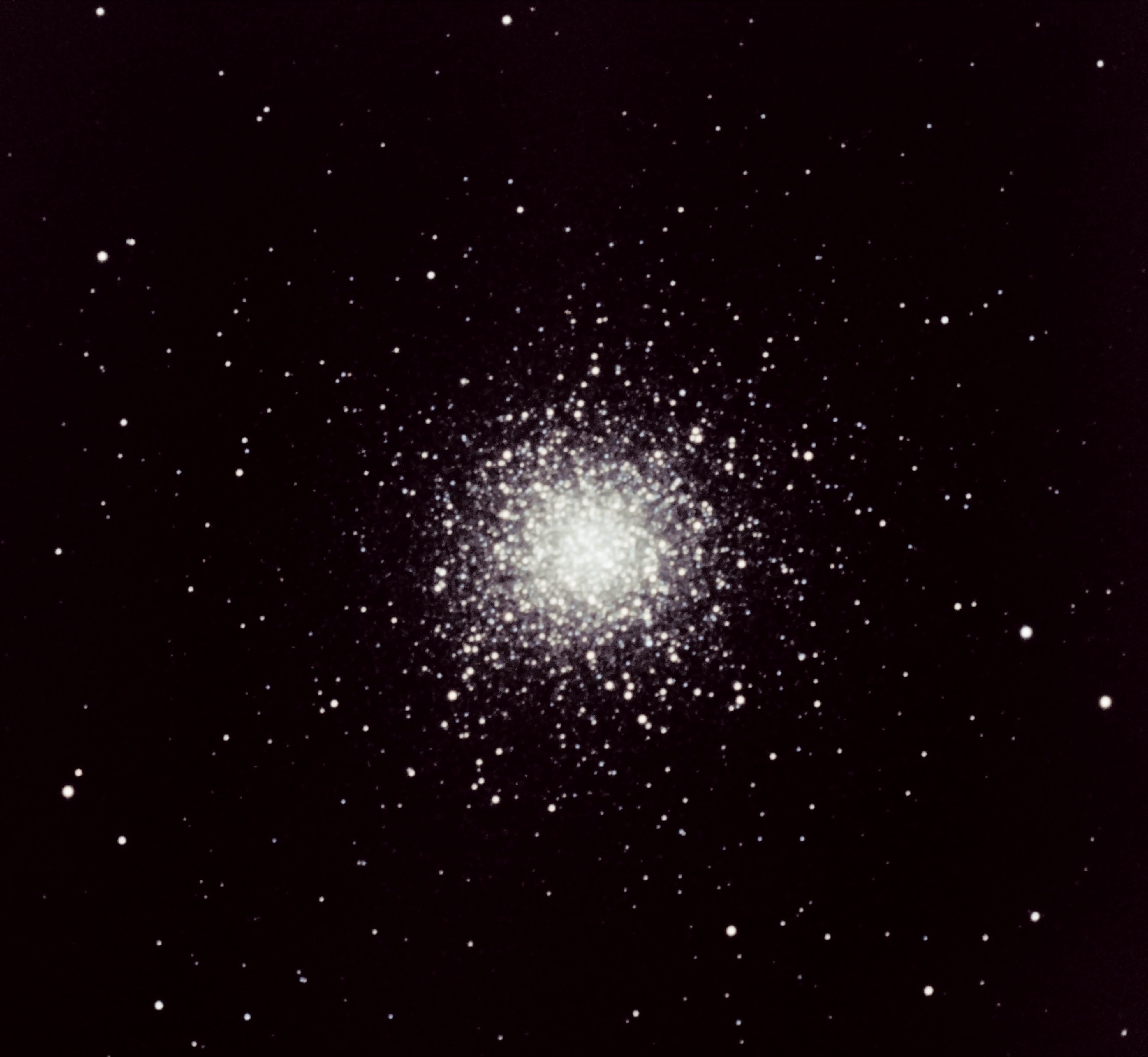
“People assume astronomers take their own photos. I needed quite a lot of guidance for how to take the images. It took a while to fiddle with the image properties, but I got my images.”
Dornan’s been invited back for another week-long residency in bug-free October, when longer nights offer more opportunities to explore and photograph the final frontier.
She’s aiming to defend her PhD thesis early next summer, then build a career that continues to combine research and outreach.
“Research leads to new discoveries which gives you exciting things to talk about. And if you’re not connecting with the public then what’s the point of doing research?”

Science
Where in Vancouver to see the ‘best meteor shower of the year’
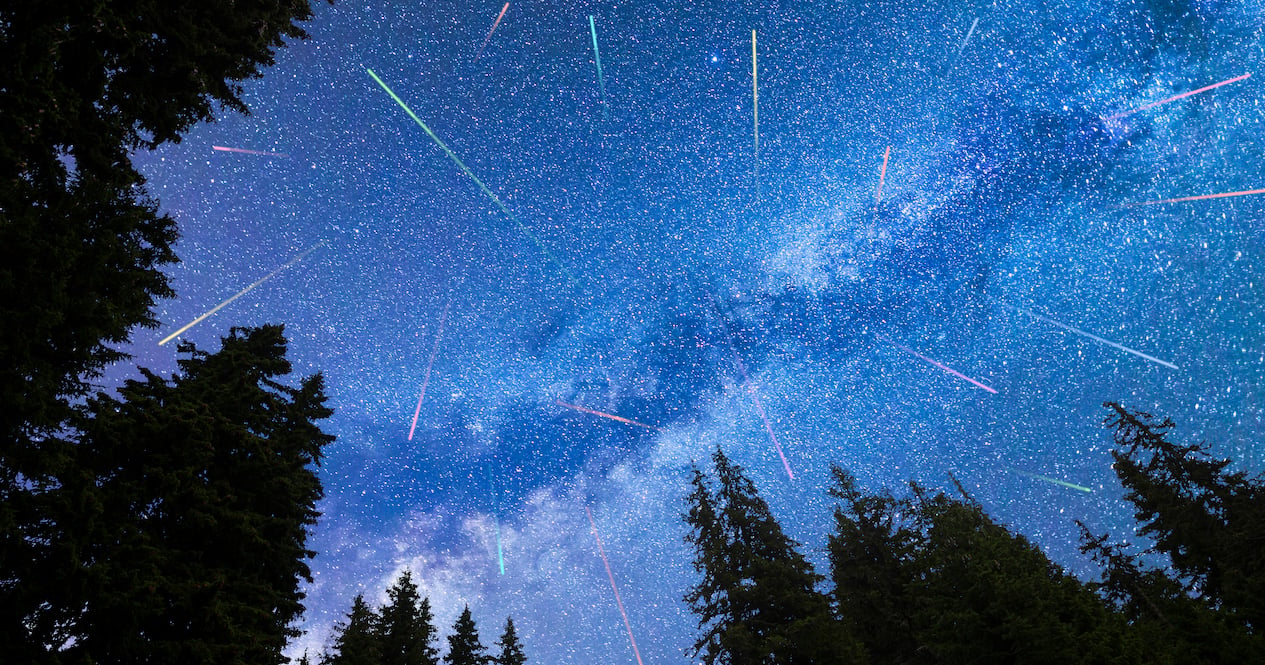
Eyes to the skies, Vancouver, because between now and September 1st, stargazers can witness the ‘best meteor shower of the year’ according to NASA.
Known for its “long wakes of light and colour,” the Perseid Meteor Shower will peak on August 12th, 2024 – so consider this list a great place to start if you’re in search of a prime stargazing spots!
Grab your lawn chairs and blankets, and seek as little light pollution as possible. Here are some ideal stargazing spots to check out in and around Vancouver this summer.
Recent Posts:
This island with clear waters has one of the prettiest towns in BC
10 beautiful lake towns to visit in BC this summer
Wreck Beach
If you’re willing to brave the stairs and the regulars, it doesn’t get much better than Wreck Beach for watching the skies – for both sunsets and stargazing. The west-facing views practically eliminate immediate distractions from the city lights.
Spanish Banks Park
Spanish Banks is the perfect mixture of convenience and quality. Its location offers unobstructed views of the skies above, and it’s far enough away from downtown to mitigate some of the light pollution.
Burnaby Mountain Park
If it’s good enough for a university observatory, it’s good enough for us. Pretty much anywhere on Burnaby Mountain will offer tremendous viewpoints, but the higher you get the better (safely).
Porteau Cove
A short drive from Vancouver gets you incredible views of the Howe Sound from directly on the water. And naturally, its distance from any nearby community makes it a prime spot for stargazing.
Cypress Mountain
In addition to having one of the best viewpoints in Vancouver period, Cypress Mountain (and the road up to it) is also a great place to watch the sky. For a double-whammy, we say that you come around sunset, then hang out while the sky gets dark. Sure, it might take a few hours, but the view is worth it.
So there you have it, stargazers! Get ready to witness a dazzling show this summer.

-

 News19 hours ago
News19 hours agoIndustry awaits labour board decision in railway dispute
-

 News14 hours ago
News14 hours agoIndustry, workers await labour board decision in railway dispute
-

 News9 hours ago
News9 hours agoMontreal police investigating suspicious death of an 88-year-old man
-

 News20 hours ago
News20 hours agoProfessor asks top court to review ‘revolutionary’ law curbing spy watchdog members
-

 News16 hours ago
News16 hours agoUnder sea and over land, the Paris Paralympics flame is lit before beginning an exceptional journey
-

 News9 hours ago
News9 hours agoWeekend rain dampening B.C. wildfire activity as active blazes numbers drop
-

 News11 hours ago
News11 hours agoTugboats free grounded cargo ship blocking traffic in St. Lawrence Seaway
-

 News14 hours ago
News14 hours agoAs Newfoundlanders say goodbye to a daily print paper, some worry culture will suffer














